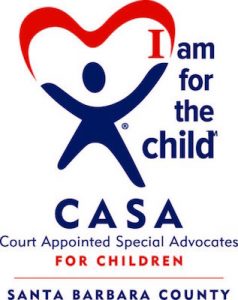Soft-spoken, with a courtly politeness that seems more Southern than Southern California, William (Bill) Macfadyen doesn’t exactly conjure up images of your typical work-into-the-wee-hours, Red Bull-drinking, pimply-faced Internet entrepreneur. But with this week’s launch of Noozhawk, Santa Barbara’s first comprehensive, free online newspaper, he’s aiming to be the local daily on everybody’s lips–and laptops.
Leslie Dinaberg: Tell me about Noozhawk?
William Macfadyen: It is a community newspaper without the paper. There are two parts to it: it will be professional reporters, like yourself, doing original reporting on news, business, sports, real estate, nonprofits, schools. So there will be original content that we provide on the site, and then the real hook to the site will be to get the community involved through contributions from what I’m calling community contributors.
LD: Do you mean blogs?
WM: No, what we want to do is tie Noozhawk into the community by getting involved with all the networks that exist within Santa Barbara, communities within the community. That would mean a church or a club sports program or a school or a nonprofit or a business even …They can tell the story, submit their stories to Noozhawk and then we can help them get that word out about their organization.
LD: Will there be some way for readers to distinguish whether they are reading something from a member of an organization versus a professionally written and reported story?
WM: Yes, because the consumer needs to know what’s professional objective reporting, and what is a contribution from somebody who has an agenda … when it comes to a small nonprofit group or a school, they’re just really enthusiastic about their mission and want to get that word out. I think a community newspaper is uniquely suited to tell that story and we think Noozhawk will be able to do that in a way that a [printed] community newspaper, with all of its infrastructure, can’t possibly tell or afford.
LD: Explain the economics of that. Why is it easier to do that online?
WM: It’s so much easier to do that online because the Internet is infinite space. It’s basically free. There’s not an artificial or arbitrary limit on paging or a time.
LD: Will there be an editorial page?
WM: Noozhawk itself won’t take editorial positions or make endorsements on candidates or projects, what we want to do is foster debate on community issues that aren’t being covered or serviced anywhere else in town.
Santa Barbara is the greatest community in the world but we do have some really big challenges ahead of us: housing, transportation, the change in demographics, all of those issues are crying out for some kind of community dialogue and it just isn’t there. So what we want to do is offer a place where people can have that debate and discuss those issues and ask the questions that need to be asked, and maybe through that process we can help develop some solutions to some of those challenges.
LD: One of the things that I hear from people that are relying on the Internet now for most of their local news is that “it’s out there but there’s so much other stuff to sift through.”
WM: That’s kind of where this whole concept came in because anecdotally many, many people in town have come up with their own routines to find out what’s going on in their community. …The problem with that is … you’re not trained to go out and search for the news. …You’re not a journalist. And the news delivery really should be brainless … it should just magically show up on your doorstep, in your driveway, in your inbox, wherever, and you shouldn’t have to go looking for it. … What we’re trying to do is pull that all together and then basically be a one stop shop for people to get their news and then move on with their day. … There is no newspaper of record or information source of record. Noozhawk aims to change that.
LD: Where does the name Noozhawk come from?
WM: News hawk is slang for a newspaper reporter, so we just had a little Web 2.0ish fun with the news end of it and named it Noozhawk. Plus hawks are flying everywhere and they see everything.
LD: Why are you personally doing this?
WM: Because I’m not qualified to do anything else.
I’m too old for the Dodgers, although they could use me. I’m personally doing this because I’m very committed to Santa Barbara. I’m proud to live here. I love this community and I don’t like the fact that it’s not being served by its media. I think I know how to put together a quality news product, and I know I know the community, and what I’m trying to do is marry those two and fill a void.
LD: Why will this succeed when other start-up news ventures have failed?
WM: I have no idea what you’re talking about. (Laughs) Henry Ford said, “Failure is an opportunity to start anew only more intelligently.” And that’s what I am doing. I would not have undertaken this endeavor without the Beacon experience and part of that is, I think the Beacon was a fantastic newspaper. Certainly it served its readers very well. … But it failed as a business because we weren’t able to connect with the advertisers quickly enough. And so with Noozhawk, the genesis and evolution of that has been the opposite. I started out talking to advertisers first.
LD: So it feels like they are ready to embrace the Internet?
WM: That’s interesting because when we had the Beacon and we talked about the web part of it, the readership just wasn’t there yet … That dynamic and that whole attitude has changed. What I found in talking to those advertisers is that when I went back to them last fall and started talking to them about this project, their reaction was, “I’m done with print, it no longer works for me, it’s all about the Internet. Internet, Internet, Internet.”
When I first had the idea, older readers, retirees, who had been the core newspaper readers for generations, were resistant to the concept. …Then as time went on, and the Santa Barbara situation kind of deteriorated, I was finding even at the retiree level, the former newspaper reader level, those people were saying, “You know what. I’m actually finding my news online and it’s not that bad. I don’t really miss that routine.” Plus it’s environmentally friendly
LD: Are there any other models or any other communities that are already doing this kind of thing successfully?
WM: Not that I could find with a successful advertising model. … For this to succeed, the business community needs to support it and see it as a worthwhile endeavor that’s effective for their needs.
Without going into the details, I think Santa Barbara has some unique circumstances that are lending themselves to this idea here at this time. That said, I think you need to have some authenticity, and you need to really know the community. And I think we have some advantages in that area. The folks we have involved really know this community. Both Jim Farr (former publisher of the Goleta Valley Voice and Noozhawk’s Operations Manager) and I, obviously, were both community newspaper publishers. We don’t see eye to eye on a lot of things in the political spectrum but we’re both passionate about this community and want the best for it, and I think we have a certain respect and credibility in the community, at least in the business community.
LD: What’s the business model? How will this venture actually make money?
WM: Advertising revenue. It’s advertising supported, it’s free to use. We’re asking people to register for the daily email that goes out, but the idea would be that advertising is paying for the site in most cases.
LD: What about if the people at the table next to us were talking about Noozhawk, what would you want them to be saying?
WM: We want them to be talking about it all the time, like my gosh, it’s the most effective, more informative source for news and Information I’ve ever seen. I think at its heart, we want them to recognize Santa Barbara within Noozhawk’s website, The community that they know, we want to make sure that it’s reflected on the site.
It’s a great community, you know, I know it, everybody knows it, but too often it’s just invisible.
LD: What do you know now that you wish you would have known when you started the Beacon?
WM: You know, I thought when we started the Beacon that I really knew Santa Barbara and I didn’t. I had lived here at that time about 17 years, and just didn’t quite know or appreciate how interconnected everything was. And I think partly through the Beacon and partly through the Goleta Valley Chamber of Commerce, I think I have a great understanding and greater appreciation of how it all works, which is why I’m confident about Noozhawk’s success.
LD: When you’re not working, what do you like to do?
WM: It’s Dodgers Baseball and it’s killing me now.
LD: If you had to sum yourself up with just three adjectives, what would they be?
Persistent
Principled
Confident
LD: Is there anything else you want to tell our readers?
I would say that Noozhawk is as much about them, actually is more about them than it is about our community, and so for them to take ownership of the site and get involved, our community will benefit, because at the end of the day, they have more knowledge about what’s going on in the community collectively than any single news source does individually. We really want their involvement.
Vital Statistics: William M. Macfadyen
Born: Sept. 8, 1960, Chicago
Family: Wife, Missy; children, Will, Colin and Kirsten; one Alaskan malamute
Civic Involvement: Board chairman, Goleta Valley Chamber of Commerce; board secretary, Regional Legislative Alliance; board member, Coastal Housing Coalition and Santa Barbara Community Housing Corp.; past senior warden, All Saints By-the-Sea Episcopal Church
Professional Accomplishments: Co-founded the late South Coast Beacon newspaper, recipient of the California Newspaper Publishers Association’s General Excellence Award in its first year of eligibility; charter member, American Copy Editors Society
Little-Known Fact: Grandfather, Jack Macfadyen, founded the Malibu Times newspaper in the 1940s


 “When I started I expected nothing for myself,” said Doris Becker, recalling her ten years as a volunteer
“When I started I expected nothing for myself,” said Doris Becker, recalling her ten years as a volunteer ![By Esby (talk) 01:43, 16 April 2010 (UTC) (Own work) [GFDL (http://www.gnu.org/copyleft/fdl.html) or CC BY-SA 3.0 (http://creativecommons.org/licenses/by-sa/3.0)], via Wikimedia Commons](https://lesliedinaberg.com/wordpress/wp-content/uploads/2005/10/MangAzur_-_2010_-_Espace_Dance_Dance_Revolution_-_P1310765.jpg)